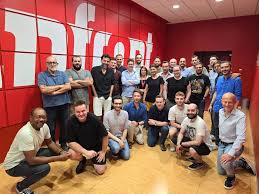When fans tune in to a live game, what they see feels seamless — the perfect camera angle, the commentator’s voice, the instant replay. But behind every flawless 스포츠 중계 (sports broadcast) is an enormous amount of coordination, technology, and human effort. Sports broadcasting is not just about showing a match; it’s a complex production that blends creativity, engineering, and teamwork to capture every emotion and every second of action.
The Production Team: The Heart of Every Broadcast
A professional 스포츠 중계 begins long before the first whistle. Producers, directors, camera operators, and technicians work together to ensure every moment reaches the audience smoothly.
Key roles include:
- Producer: Oversees the entire broadcast, from planning to execution.
- Director: Chooses camera angles and cues replays in real time.
- Camera Crew: Operates dozens of cameras positioned across the venue.
- Audio Engineers: Balance commentary, crowd noise, and ambient sounds.
- Graphics and Replay Operators: Manage scoreboards, statistics, and instant replays.
This team operates like a live orchestra — every cue, switch, and shot must happen in perfect synchronization.
Pre-Game Preparation and Planning
Before the game even begins, broadcasters spend days preparing logistics and technical setups. The 스포츠 중계 crew conducts site surveys to determine camera placements, power sources, and network connections.
Detailed storyboards outline how the broadcast will flow — from the opening introductions to halftime analysis and post-game interviews. Contingency plans are also prepared in case of equipment failure or weather interruptions.
This meticulous planning ensures that once the event starts, every element runs flawlessly.
Camera Placement: Capturing the Perfect Angle
Modern sports broadcasting uses anywhere from 10 to 40 cameras, depending on the event size. Strategic positioning allows directors to switch between angles that best capture the drama.
In football, for instance:
- High sideline cameras show tactical formations.
- Goal-line cameras capture crucial close-ups.
- Drone and aerial cameras provide cinematic overviews.
Each 스포츠 중계 relies on this visual choreography to keep fans both informed and emotionally engaged.
Sound Design: Bringing the Stadium to Life
The roar of the crowd, the thud of the ball, the whistle of the referee — sound is what makes sports feel alive. Audio engineers use specialized microphones placed around the field to capture every nuance.
They balance this natural sound with commentary and music to create an immersive experience. A well-mixed 스포츠 중계 lets fans feel as though they’re right there in the stands, hearing the energy of every play.
Real-Time Graphics and Data Integration
Live statistics and visual overlays have become essential in modern broadcasting. Real-time data — such as player speed, possession percentage, or distance covered — is displayed instantly during the game.
To make this possible, broadcasters integrate data feeds directly into their graphics systems, ensuring that every number updates automatically. The production team must coordinate timing perfectly so that visuals appear without distracting from the live action.
These graphics transform a 스포츠 중계 from a simple viewing experience into an informative and analytical one.
Instant Replays and Highlight Creation
Few moments are more exciting than a slow-motion replay of a game-changing play. Behind the scenes, replay operators record multiple camera angles simultaneously and select the best shots within seconds.
Advanced EVS systems allow editors to cut and replay footage instantly — whether it’s a spectacular goal, a controversial foul, or a crucial referee decision.
This instant response keeps 스포츠 중계 thrilling and responsive, ensuring fans never miss the most important moments.
The Role of Commentary and Presentation
While the technical crew handles visuals, commentators and presenters give the game its human touch. Their voices guide the audience, adding insight, energy, and emotion.
Pre-game shows, halftime analysis, and post-game interviews provide context that enriches the viewing experience. Together, this combination of live play and storytelling turns sports broadcasting into an emotional journey.
Remote and Cloud Production: The New Standard
Thanks to high-speed internet and cloud technology, many broadcasts no longer require full crews on-site. Remote production — known as REMI (Remote Integration Model) — allows directors and editors to control the 스포츠 중계 from centralized studios.
This method reduces costs, increases efficiency, and allows coverage of more events simultaneously. Cloud-based tools also enable real-time collaboration among international teams — a major advancement for global sports coverage.
Challenges During Live Broadcasts
Even with the best preparation, live broadcasting remains unpredictable. Weather conditions, signal interference, or power issues can disrupt coverage.
That’s why redundancy systems — backup power, duplicate signal routes, and secondary camera feeds — are built into every 스포츠 중계 plan. The ability to adapt instantly is what separates great broadcasters from good ones.
Final Thoughts
Behind every great sports broadcast lies a symphony of coordination, creativity, and cutting-edge technology. The players may be on the field, but hundreds of unseen professionals make it possible for fans to experience the game in all its glory.
A professional 스포츠 중계 captures not just the match, but the emotion, energy, and connection that define sports themselves. Every cheer, every moment, every heartbeat — all brought to life through the invisible magic of broadcast excellence.

